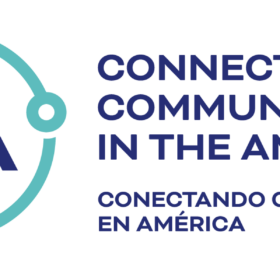This blog post was written by Lisa Schalla, Project Director of the Connecting Communities in the Americas initiative.
As we move into 2022, there are many ways that community foundations and philanthropy serving organizations can help immigrant families and others that are in the process of migration.
1) Support research
Updated census and other official records are not always available on immigrant populations. Here are two examples of how foundations can play a key role in working with their communities to contribute to a deeper understanding of their contexts through data and stories of lived experiences.
Connecting Communities in the Americas (CCA) Mapping Projects
In the past 5 years, 18 community foundations in Mexico, Brazil and the United States received grants from CCA (then called BBCA) to research and map the immigrant, emigrant, diaspora and/or repatriated migrants in the communities that they serve. These reports provide invaluable, updated data and stories that help us understand and value the contributions and needs of these communities so that we can engage with them more effectively. See the first Mapping Project reports in English and Spanish here.
This is an example of research conducted by the Amherst H. Wilder Foundation to inform the work of foundations in support of immigrants in Minnesota.
2) Create or join a funding collaborative
For funders, joining a well-organized collaborative can multiply impact. Be sure that immigrants and immigrant-serving organizations, who are much closer to the lived experiences, are on your advisory council! Here are a couple of examples:
Grantmakers Concerned with Immigrants and Refugees (CA)
Founded in 1990, GCIR is a national, immigrant-focused philanthropy support organization (PSO) in the United States. With 130 partners across the country, its focus is to inform policy changes, connect institutions with similar concerns and visions, and catalyze change at local, regional and national levels.
Immigrant & Refugee Funders’ Collaborative (OR)
The IRFC is an example of a regional collaborative to address immigrant and refugee issues in Oregon and support immigrant-serving organizations. Funders can support legal services, outreach and education, research, basic human needs, and community organizing. See the Oregon Community Foundation website to view the collaborative framework.
3) Become a welcoming community and strengthen access to resources
Learn how this nonprofit is working with nonprofits and local governments across the U.S., providing a framework for initiating community conversations about what it means to be a welcoming host for newcomers.
Review how this partnership nonprofit offers financial services in 15 different languages and helps to set up lending circles across the country.
4) Support language equity
In a country where English is the language used in education, government and commerce, funders can support institutions that offer services to immigrants in their own languages.
Language Access is a Human Right (CA)
This interview with Comunidades Indigenas en Liderazgo (CIELO) cofounder Olidia Romero highlights their approach to supporting language equity among indigenous communities. She offers concrete solutions through cultural programming and partnering with government.





